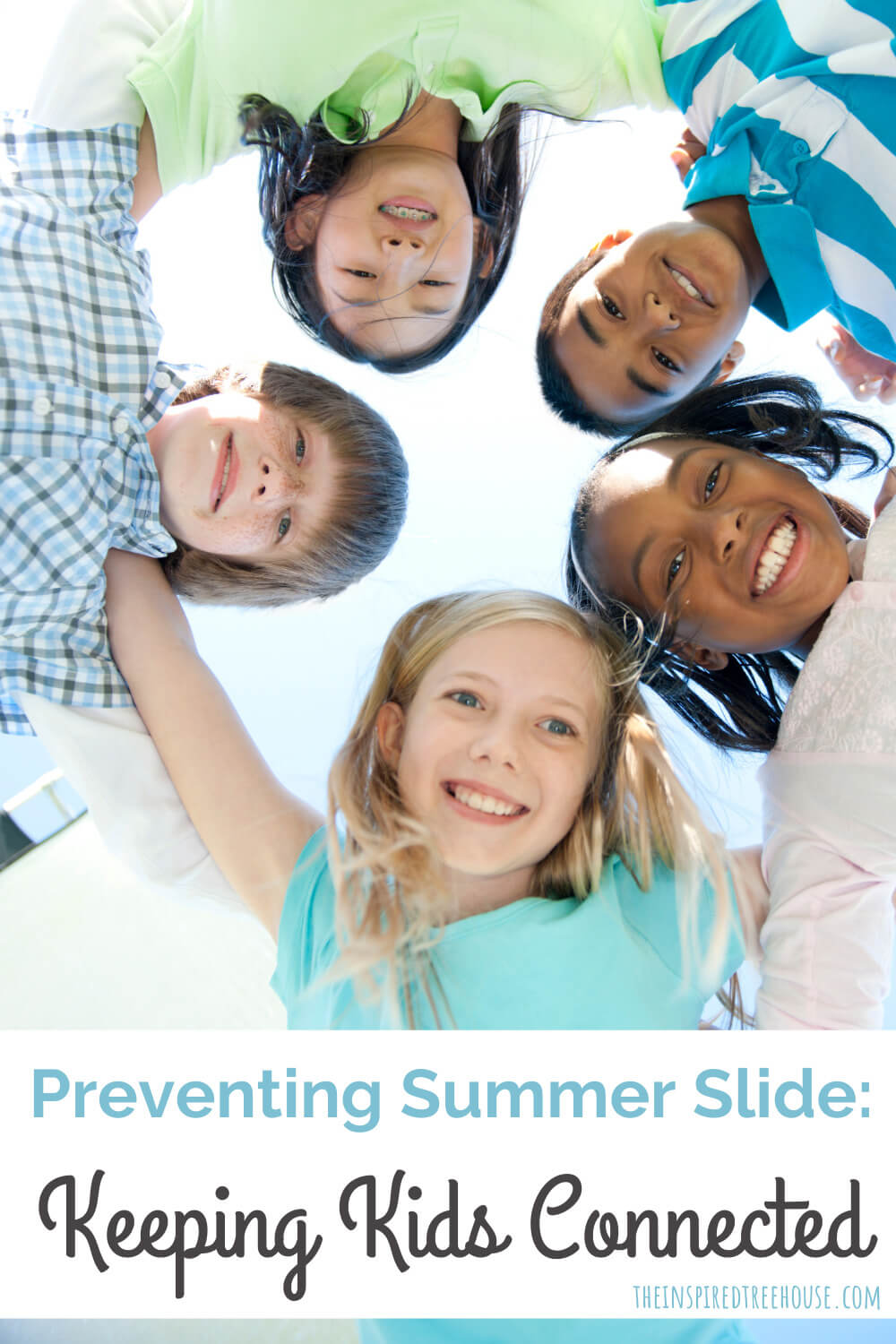Switching from the school routine into “summer mode” can be overwhelming for many kids – that’s why it’s important to stay connected with our kids all summer long!
 As we approach the end of the school year, we’ve been talking more about summer slide – the concept of kids losing skills that they’ve gained at school or in therapy over the extended summer break.
As we approach the end of the school year, we’ve been talking more about summer slide – the concept of kids losing skills that they’ve gained at school or in therapy over the extended summer break.
As school-based therapists, we know the struggle of returning to school in the fall to find that many of the students on your caseload are unable to perform skills that they had mastered the previous spring. It can be so frustrating for the kids, their families, and for us as therapists!
No doubt about it, school is the ultimate skill-building experience for kids. From academics to social skills to self-care skills and beyond – kids gain many of the skills that they will need in the real world through exposure and practice at school.
But today, we want to talk about a different aspect of school and the summer slide. Because school is more than just a skill-building experience. For most kids, it is also a home away from home. The relationships and interactions that kids have with their peers, teachers, and other adults at school are so significant to their emotional development. Their daily school routines provide a sense of stability and predictability that put many kids at ease.
We know that autistic kids and other kids with special needs rely heavily on these things to support independence, emotional regulation, and self-regulation. When the school year ends, kids are expected to abruptly shift away from this familiar structure and the familiar faces of their school routine into “summer mode”. And for many, this can be overwhelming and difficult.
Today, we’re sharing some ideas for how kids can stay connected to the comforting skills, activities, routines, and faces from school – all summer long!
Preventing The Summer Slide: Keeping Kids Connected to School
1 || Printables
Send printables home with kids at the end of the school year to practice the skills you’ve been working on in therapy. Try these:
2 || Links
Send links to activities you’ve done during therapy for parents to try at home. Try these Easy Activities for Kids: No Fancy Supplies Needed!
3 || Social Stories
Social stories with pictures of people and places from school and familiar activities from the classroom and therapy can be a great way for kids to stay connected to their daily routines.
4 || Videos
Try sending videos of the child doing activities during therapy to the parent for them to watch and practice at home. The Hand Strength Exercise Program and The Core Strength Exercise Program are perfect for this because they include links to videos of each activity.
5 || Journals and Writing prompts
Consider an online journal that kids can complete together or write back and forth to each other. Use writing prompts to encourage handwriting practice and have kids upload copies of their “stories” to share.
6 || Letters and Postcards
Everyone loves mail! Try these free postcard templates to keep kids connected to one another and to teachers and therapists over the long summer months.
7 || Vitalxchange
Use the Vitalxchange platform to create a storefront so families can reach you if they have questions or concerns. Not only is this a great way to stay connected without giving out your personal cell number or email, it’s a great side hustle that might even earn you some extra summer income! If you have an area of expertise or something you are passionate about, families may be looking for someone just like you to chat with. Think of Vitalxchange as a new, innovative way to prevent that summer slide!

Latest posts by Claire Heffron (see all)
- Cute Zipper Bags for Therapists - April 18, 2024
- Fairy Tale Games and Toys - April 12, 2024
- The Best Emotional Regulation Books for Kids - April 8, 2024

